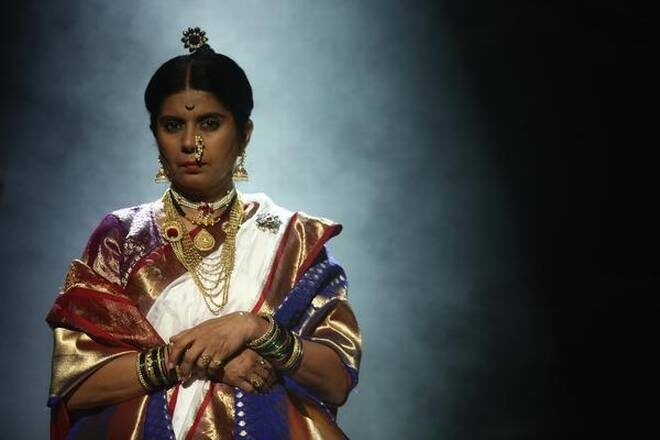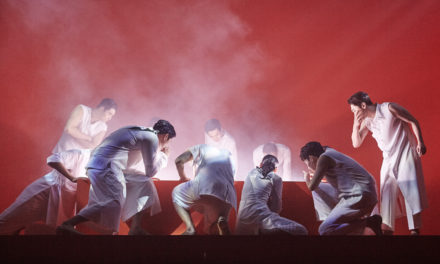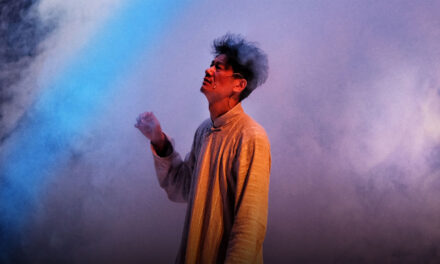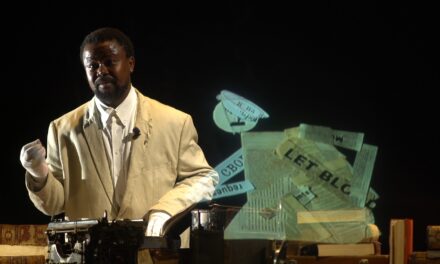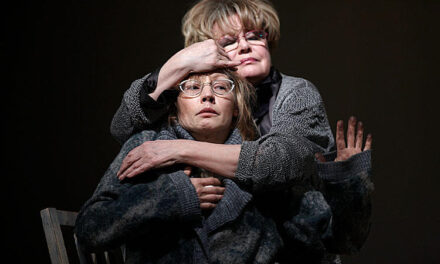As Agnipankh is televised, Mita Vashisht reflects on the shifts in theatre due to the pandemic.
Under the spotlight, the silhouette of a woman becomes visible. Clad in a silk saree, she is seated on a high armchair, one foot tucked under her, and the other on the footstool. The inner precincts of a lavish haveli come to life as she peers thoughtfully into an array of files, adjusting her spectacles and holding a quill. Actor Mita Vashisht plays the matriarch of a zamindar family in Maharashtra in a play set in 1948. Agnipankh, the Hindi adaptation of PL Mayekar’s epic Marathi play from the 1980s, has been revived in this teleplay version.
“The play is relevant for all times,” says Mita. “It talks about people, their strengths and vulnerabilities, and standing up for what they believe is right.”
The play revolves around the character of Durgeshwari, known as “Baisaab,” who runs the zamindari estate with astute authority while her husband (played by Satyajit Sharma), unable to manage the business with his scholarly and artistic interests, has succumbed to alcoholism and debauchery.
“It is one of the rare dramas from that era where the woman is at the centre. She came into the family as a young wife, cleverly brought in because of her intelligence in handling the fortunes of the estate, and even though she is a woman, she upholds the system’s patriarchy. She is also child-like since she hasn’t known any other man, and shares this love-hate relationship with her husband,” points out Mita, who has played the role of a strong woman many times before.
For the actor, it was important to find her unique voice as Baisaab.
“I took a long time figuring out how Baisaab would speak. The spoken word is often overlooked by actors. Working with the word is not just communicating the dialogues, but how you release the word, the pauses, the breath.”
Stage to Screen
Mita has worked across different genres and medium — stage, cinema, and television. The power of the teleplay lies in its simple stage aesthetics that do not alter the camera’s dramatic flow. After numerous live shows since 2017, the play was adapted for the OTT platform.
“The set design, lighting, and scenography remain unchanged. Initially, I was skeptical about televising it, but we were not overwhelmed by the camera. It was important to stay faithful to the format of the play and the energy of theatre as it is performed.”
Mita disagrees that technology is key to presenting plays today. She feels it is important to return to simple aesthetics of stagecraft and layered performances.
“Is digital theatre really theatre? I feel that in the coming years, technology will take a backseat and the performers will come to the forefront.”
Reflecting on the shifts in the theatre form because of the pandemic, the actor says, “Will we get to do theatre again? Maybe in the lawn, maybe we will sit on blankets, apart from each other and watch. I feel, in a strange way, that the present challenge is taking theatre back to where it came from. Theatre architecture was designed for being near nature. Maybe it is time again to return to a theatre in the open, instead of pushing it behind closed doors.”
During the lockdown, Mita got into an introspective mode and tried to make peace with the uncertainty.
“I want to ask the artiste community – even when things were normal did one always have work? I think it’s important to respect and be humble about this uncertainty. We think we are in control of our life, but it’s not so. This is a chance to reflect upon this, to be free from fear and think of new ways of being.”
(Agnipankh is screening on ZEE5)
This article was originally published on TheHindu.com on October 8, 2020, and has been reposted with permission. To see the original article, click here
This post was written by the author in their personal capacity.The opinions expressed in this article are the author’s own and do not reflect the view of The Theatre Times, their staff or collaborators.
This post was written by Shrinkhla Sahai.
The views expressed here belong to the author and do not necessarily reflect our views and opinions.

